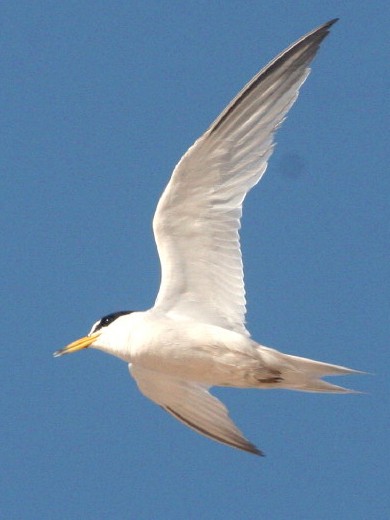Least Terns on the Red River
For a number of years, the Least Tern has been on the endangered species list. BSG member Hubert Hervey has chronicled the nesting successes (and failures) of the endangered Interior Least Tern on the Red River since 1996. Hubert's findings and recommendations to improve the terns' nesting success were published in The Journal of Louisiana Ornithology (JLO), Volume 5, No. 1, Summer 2001 and Louisiana Ornithological Society Newsletter (LOS NEWS), No.199, September 2002.
The change in population density was probably due to changes in preferred nesting habitat as a result of altered river dynamics. The Lock & Dam system which allows navigation of the river has the effect of slowing the flow of the river and buffering the effects of seasonal rains and thaws which tend to scour sand islands of vegetation. Islands that are overgrown with vegetation are not preferred by the Least Tern. Least Terns need sand covered islands to nest successfully.
Possible solutions include:
1. Periodically clear existing islands of vegetation.
2. When building dikes, do not connect dikes to the shoreline (prevents land-based predation).
3. Utilize byproducts of dredging operations to create new habitats.
4. Create artificial nesting platforms on derelict barges.
5. Increase the public's awareness of the Interior Least Tern as an endangered subspecies (decrease recreational use of these islands).
Hubert Hervey has participated in surveys conducted by U. S. Army Corps of Engineers biologists on the Red River and his last survey (2020) is available by clicking here.
These surveys are no longer being conducted since the Least Tern has been removed from the Endangered Species List because populations of the Least Tern along the Mississippi River have increased significantly in recent years. The populations along the Red River are still under stress and may eventually disappear.
Additional information was published in Bird Study Group Newsletters for September 2003 and September 2004.

Least Tern. Photo by Jeff Trahan